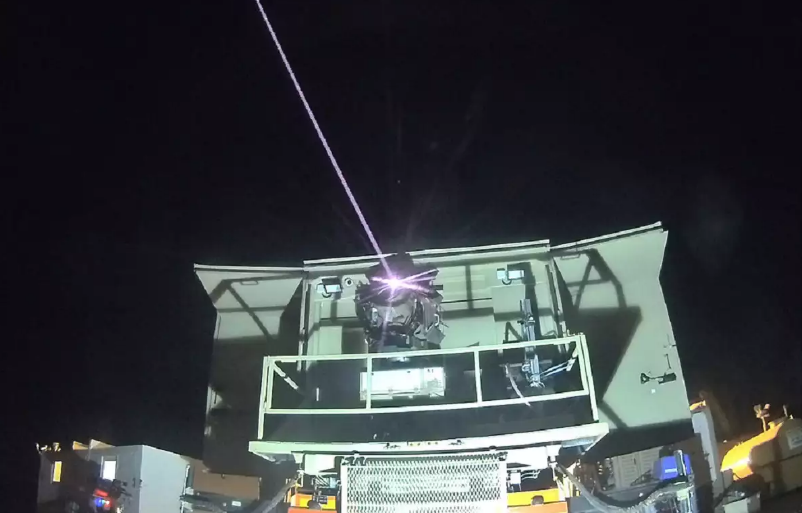
As much as any recent month, C-UAS activity for September illustrated the truly global nature of the effort, with multiple countries advancing unique solutions. The month was also notable for calling attention to what could prove to be an apt descriptor for an important and timely new concept: the “drone wall”. This idea is nothing less than an early-stage vision for protecting an entire country and region from drone attack with myriad, interconnected and layered C-UAS technology.
On September 22, European Union members held discussions in Copenhagen with the European Commission and representatives from Ukraine to draw attention to the ‘drone wall’ prospect in the aftermath of several Russian drone incursions, including an incident in Lithuania over the summer. Almost two dozen Russian drones also crossed into Polish airspace earlier in September, resulting in the Polish Air Force and NATO allies shooting down UAVs.
As discussed, the ‘drone wall’ concept would comprise an advanced, layered network of radar and other detection technology in coordination with interception systems, such as jammers, directed energy, and short-range missiles to defeat everything from individual attacks to more threatening drone swarms.
Illustrating the type of activity involved in making the ‘drone wall’ a reality, on September 25, Sierra Nevada Corp. was awarded a $14.9 million U.S. Navy contract to provide product-based field service, maintenance and sustainment for the Ukraine Navy’s C-UAS program, along with support for various other systems already deployed in Eastern Europe under NATO.
Earlier in the month, September 2nd saw the announcement by AeroVironment of the successful delivery of the first two mobile C-UAS prototype Laser Weapon Systems (LWS) to the U.S. Army as part of the first increment of the Army Multi-Purpose High Energy Laser (AMP-HEL) prototyping effort. The AMP-HEL prototype systems feature the company’s 20kW-class LOCUST LWS integrated on the General Motors Defense Infantry Squad Vehicle (ISV) platform.
On September 4, Echodyne, followed with their own announcement that the company had been selected as the radar provider for Project LAND 156, the Australian government’s effort to equip the Australian Defence Force with C-UAS capabilities. Echodyne will partner on the project with integration team leader, Leidos Australia, EOS Australia, Acacia Systems, and L3Harris Technologies, among others.
September 9 brought news that the Ukrainian Armed Forces would receive Skyranger very-short range air-defense systems from Rheinmetall by year’s end. The systems are designed for installation on multiple types of military vehicles, including Leopard tanks.
The next day, at the Defence and Security Equipment International (DSEI) exhibition, Sweden’s Nordic Air Defence and Volvo Defense announced a partnership to integrate C-UAS technology into Volvo’s VIPRO vehicle protection systems. This effort will see Volvo’s vehicle platforms paired with Nordic Air Defence’s Kreuger 100XR interceptor.
September 16 kicked off the C-UAS Middle East and Africa Conference in Amman, a two-day meeting, organized by the Jordan Design and Development Bureau with U.K.-based SAE Media Group and support from the Jordan Armed Forces, to showcase advances in drone detection and interception. Delegations from forty-one countries, including the United States and NATO members, were expected to attend.
Back in the U.S., DroneShield, on September 17, announced it had surpassed 4,000 C-UAS systems sold worldwide with the receipt of a package of two standalone contracts totaling $7.9 million for handheld systems for delivery to the U.S. military.
That same day, Israel’s Defense Ministry and Rafael announced that the Iron Beam high-energy laser interceptor was operational after final tests. The system completed trials that included intercepting rockets, mortars and drones, and was poised by planners for delivery by year’s end.
In May, according to The Times of Israel, military leaders revealed they had successfully intercepted dozens of Hezbollah drones the previous year using the system.
On September 29th Taiwan’s Aerospace Industrial Development Corp (AIDC) announced development of a new 8-kilowatt fiber-optic laser weapon, designed to engage Group 2 drones (under 25 kg) at ranges between 1 and 2 kilometers. The weapon is further supported by a mid-wave infrared camera and an Echodyne EchoShield Ku-band radar.
Finally, and by no means least for the end of September, Raytheon was awarded an eight-year, $5 billion contract from the U.S. Army for the company’s Coyote Missile System, consisting of missile launchers, kinetic and non-kinetic interceptors, and Ku-band radio frequency system (KuRFS) radars.
According to Raytheon, the Coyote can defeat single or drone swarm threats using kinetic or non-kinetic methods. Its launched effects versions are further designed for missions such as reconnaissance, electronic warfare, and precision strikes beyond the operator’s line of sight.
Andrew Dardine is lead analyst for Forecast International's Defense Electronic Systems group. He is the primary author of Forecast International's Electronic Warfare Forecast and co-author of Electro-Optical Systems Forecast and C4I Forecast. Andrew is also a regular contributor to FI's Defense & Security Monitor blog, offering insights into developing technologies such as directed-energy and next-generation jamming systems. His analysis of such vital market areas as EO/IR systems and electronic countermeasures technology has been cited in Defense News, Aerospace Daily, and Bloomberg Businessweek, among other news media. He has also written about the electronic defense market for Aviation Week and the Journal of Electronic Defense.




